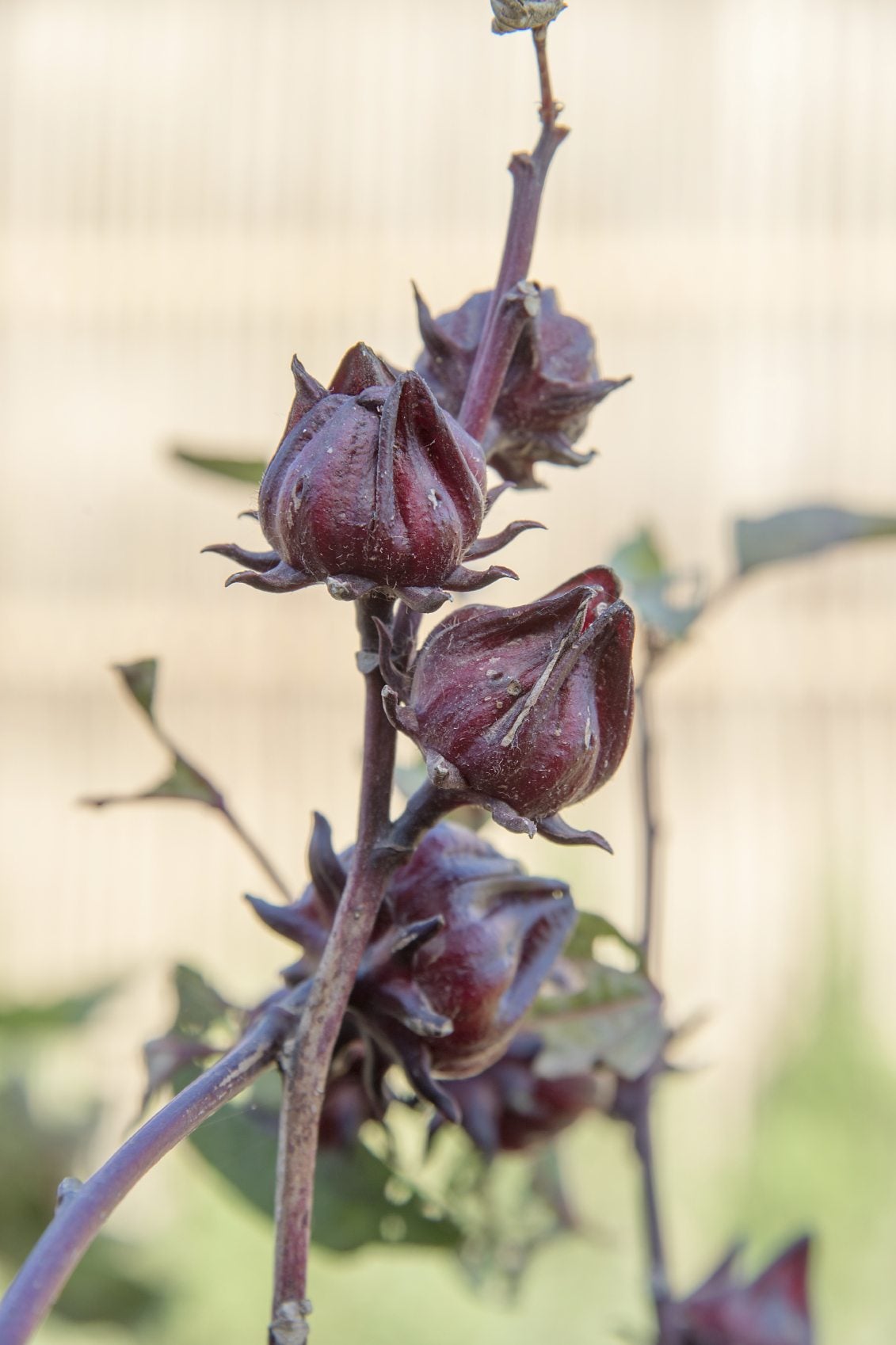Roselle Plant Care – How To Grow Roselle Plants In The Garden


What is a roselle plant? It’s a tall, tropical, red and green shrub that makes for a colorful garden addition or hedge, and tastes an awful lot like cranberries! Keep reading to learn more about how to grow roselle plants.
Roselle Plant Care
Native to tropical Africa, roselle (Hibiscus sabdariffa) is common in the tropics worldwide. It can be grown from seed in USDA zones 8 to 11, and as far north as zone 6 if it’s started indoors and then transplanted outside.
Growing roselle plants from cuttings is another option, though the resulting plants tend not to produce as many flowers, which is what they’re often grown for… sort of.
The hibiscus-like flowers are beautiful, but it’s the calyx – the bright red sheath that opens up to reveal that flower – that is so prized for its flavor. Harvest the calyces when they’re still tender (about 10 days after the flowers appear). They can be eaten raw in salads or boiled in water in a one-fourth fruit-to-water ratio and strained to make a delicious and refreshing juice. The leftover pulp can be used to make jams and pies. The flavor is very similar to cranberry, but less bitter.
How to Grow Roselle Plants
Roselle begins producing flowers when the days get shorter. In other words, no matter how early you plant your roselle, you won’t be harvesting your calyces until October at the earliest.
Unfortunately, roselle is very frost sensitive, meaning that in temperate zones you may not get calyces at all. In areas that experience no frost, however, you can plant roselle in May and expect a continuous harvest of calyces from October through late February, as the harvest of flowers encourages new growth.
Roselle plant care is relatively easy. Sow your seeds or plant your cuttings in sandy loam that receives full sun and water regularly. Little to no fertilization is necessary. You should weed around them in the very beginning, but the plants grow vigorously and will shade out weeds on their own soon enough.
Gardening tips, videos, info and more delivered right to your inbox!
Sign up for the Gardening Know How newsletter today and receive a free copy of our e-book "How to Grow Delicious Tomatoes".

The only child of a horticulturist and an English teacher, Liz Baessler was destined to become a gardening editor. She has been with Gardening Know how since 2015, and a Senior Editor since 2020. She holds a BA in English from Brandeis University and an MA in English from the University of Geneva, Switzerland. After years of gardening in containers and community garden plots, she finally has a backyard of her own, which she is systematically filling with vegetables and flowers.
-
 Looking For Plants To Give You The Soft And Fuzzies? Try These 5 Fuzzy Leaf Plant Options
Looking For Plants To Give You The Soft And Fuzzies? Try These 5 Fuzzy Leaf Plant OptionsLovers of texture, drama, silver foliage and tactile plants will adore these special sensory garden additions. These fuzzy leaf plant options will leave you all aglow
By Susan Albert
-
 Get Ready For A Summer Of Hummers! Grow These Full Sun Hummingbird Plants and Flowers
Get Ready For A Summer Of Hummers! Grow These Full Sun Hummingbird Plants and FlowersIf you’re lucky enough to enjoy a sunny backyard, make sure you are maxing out on your pollinator opportunities and grow these full sun hummingbird plants and flowers
By Tonya Barnett
